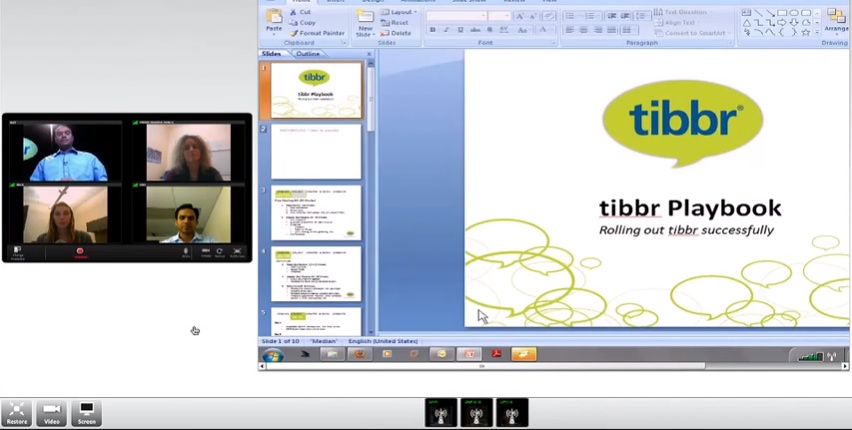tibbr 3.0: a new operating system for enterprise?

Ever since I first saw tibbr back at the beginning of the year, I've been following its progress. Back then I said:
Today, tibbr is a whole new animal with the ability to do what I have been asking of Enterprise 2.0 technologies. It intelligently marries people, process and context, delivering information the way people want to consume.
Today, the company launched tibbr 3.0 with way more functionality and some truly fascinating use cases. In his piece on the topic, Larry Dignan notes:
As someone that has documented all of these social feature additions, it’s clear that sprawl can’t be too far away. Tibco may be a little early with its pitch that Tibbr 3.0 can cure social sprawl, but the company is on to a key theme. Sharing and collaboration is becoming much more complicated than it needs to be for companies.
In many respects, Tibbr 3.0 is almost positioned as social networking middleware. Tibco’s sweet spot is messaging and middleware so it’s a natural role for the company to build on its ability to manage and analyze processes and events.
This is very much how I see tibbr from the 'tools' standpoint. What TIBCO has done is pull off a trick I've not seen done before. It has straddled both business and IT, giving them a solid reason to speak with one another on equal terms.
As the company pointed out, the proliferation of social tools isn't going away. Departments will continue to adopt the new technologies as a way of overcoming collaborative bottlenecks but as Larry observes, that inevitably leads to sprawl.
Where IT fits in is through the creation of policy based access systems that allow Person A to connect to Groups B, C and D but only a subset of Group E plus provide access to customer Group F and G and Supplier Group H. Person B might follow a different pattern and so on. By exercising control via IT, business has a safer way of managing the social sprawl without getting in the way of what people are already using. It's a complex problem to solve and TIBCO is providing IT with a console through which these management problems are mediated.
On the use case side I was intrigued at the way Apache Corp, an oil drilling company, is using tibbr to better understand drill bit wear patterns. This level of granularity sounds mundane but it is the sort of thing that saves millions of dollars. More use cases can be imagined.
Say for example an airline could eliminate time at the gate by making passenger, freight, provisioning and other data available to the crew in advance of boarding? What might that mean to delivering more efficient services to travelers? Or how about sharing data on a suspect part to determine whether a running repair is required as opposed to potentially grounding the aircraft? Or what about a situation where a doctor is undertaking a procedure and needs additional supplies that were not planned in the pre-op stage? Accessing the provisioning system and then logging out supplies can be time consuming. But if that doctor had direct access to a provisioning manager via say a hand held device then that process could be accelerated.
From what TIBCO is telling me, the use cases for tibbr are only limited by the imaginations of the businesses considering its application. That's exciting because it paves the way to unlocking enterprise information wherever it is held, irrespective of the system or person to not only save time and money but improve business performance.
Martijn Linssen, who is an integration specialist goes further. He asserts that tibbr is the enterprise operating system of the future. That's a bold claim but one that aptly describes the way enterprise might get from being stuck in operational silos to one where operations are socially mediated in any way the business chooses. On the one hand disruptive, on the other hand non-disruptive. The potential is not lost on Larry Dignan:
Users can remain within tibbr and still be part of the process flow. That has significant productivity benefit potential because at last what we see is a way to contextually engage in processes with the people who need to be engaged.
Given TIBCO's agnostic view of enterprise applications and its long history of understanding how to manage complex integrations, you have to believe they have a very good shot of making tibbr a world beater. It's not often we see that in enterprise apps but the potential is certainly there.
Disclosure: TIBCO has been a consulting client on tibbr product.
